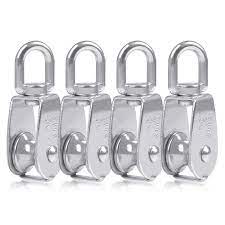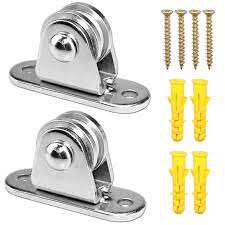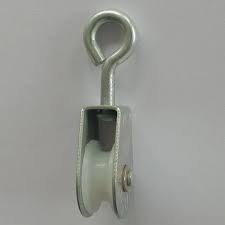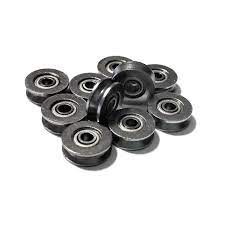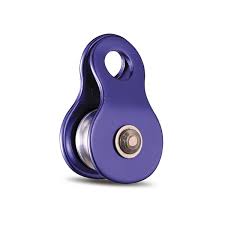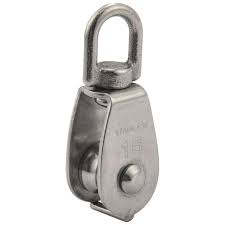Product Description
CHINAMFG Machinery offers a wide range of high quality Timing Belt Pulleys and Toothed Bars/ Timing Bars. Standard and non-standard pulleys according to drawings are available.
Types of material:
1. AlCuMgPb 6061 6082 Aluminum Timing Pulley
2. C45E 1045 S45C Carbon Steel Timing Pulley
3. GG25 HT250 Cast Iron Timing Pulley
4. SUS303 SUS304 AISI431 Stainless Steel Timing Pulley
5. Other material on demand, such as cooper, bronze and plastic
Types of surface treatment:
1. Anodized surface –Aluminum Pulleys
2. Hard anodized surface — Aluminum Pulleys
3. Black Oxidized surface — Steel Pulleys
4. Zinc plated surface — Steel Pulleys
5. Chromate surface — Steel Pulleys; Cast Iron Pulleys
6. Nickel plated surface –Steel Pulleys; Cast Iron Pulleys
Types of teeth profile
| Teeth Profile | Pitch |
| HTD | 3M,5M,8M,14M,20M |
| AT | AT5,AT10,AT20 |
| T | T2.5,T5,T10 |
| MXL | 0.08″(2.032MM) |
| XL | 1/5″(5.08MM) |
| L | 3/8″(9.525MM) |
| H | 1/2″(12.7MM) |
| XH | 7/8″(22.225MM) |
| XXH | 1 1/4″(31.75MM) |
| STS STPD | S2M,S3M,S4.5M,S5M,S8M,S14M |
| RPP | RPP5M,RPP8M,RPP14M,RPP20M |
| PGGT | PGGT 2GT, 3GT and 5GT |
| PCGT | GT8M,GT14M |
Types of pitches and sizes
Imperial Inch Timing Belt Pulley,
1. Pilot Bore MXL571 for 6.35mm timing belt; teeth number from 16 to 72;
2. Pilot Bore XL037 for 9.53mm timing belt; teeth number from 10 to 72;
3. Pilot Bore, Taper Bore L050 for 12.7mm timing belt; teeth number from 10 to 120;
4. Pilot Bore, Taper Bore L075 for 19.05mm timing belt; teeth number from 10 to 120;
5. Pilot Bore, Taper Bore L100 for 25.4mm timing belt; teeth number from 10 to 120;
6. Pilot Bore, Taper Bore H075 for 19.05mm timing belt; teeth number from 14 to 50;
7. Pilot Bore, Taper Bore H100 for 25.4mm timing belt; teeth number from 14 to 156;
8. Pilot Bore, Taper Bore H150 for 38.1mm timing belt; teeth number from 14 to 156;
9. Pilot Bore, Taper Bore H200 for 50.8mm timing belt; teeth number from 14 to 156;
10. Pilot Bore, Taper Bore H300 for 76.2mm timing belt; teeth number from 14 to 156;
11. Taper Bore XH200 for 50.8mm timing belt; teeth number from 18 to 120;
12. Taper Bore XH300 for 76.2mm timing belt; teeth number from 18 to 120;
13. Taper Bore XH400 for 101.6mm timing belt; teeth number from 18 to 120;
Metric Timing Belt Pulley T and AT
1. Pilot Bore T2.5-16 for 6mm timing belt; teeth number from 12 to 60;
2. Pilot Bore T5-21 for 10mm timing belt; teeth number from 10 to 60;
3. Pilot Bore T5-27 for 16mm timing belt; teeth number from 10 to 60;
4. Pilot Bore T5-36 for 25mm timing belt; teeth number from 10 to 60;
5. Pilot Bore T10-31 for 16mm timing belt; teeth number from 12 to 60;
6. Pilot Bore T10-40 for 25mm timing belt; teeth number from 12 to 60;
7. Pilot Bore T10-47 for 32mm timing belt; teeth number from 18 to 60;
8. Pilot Bore T10-66 for 50mm timing belt; teeth number from 18 to 60;
9. Pilot Bore AT5-21 for 10mm timing belt; teeth number from 12 to 60;
10. Pilot Bore AT5-27 for 16mm timing belt; teeth number from 12 to 60;
11. Pilot Bore AT5-36 for 25mm timing belt; teeth number from 12 to 60;
12. Pilot Bore AT10-31 for 16mm timing belt; teeth number from 15 to 60;
13. Pilot Bore AT10-40 for 25mm timing belt; teeth number from 15 to 60;
14. Pilot Bore AT10-47 for 32mm timing belt; teeth number from 18 to 60;
15. Pilot Bore AT10-66 for 50mm timing belt; teeth number from 18 to 60;
Metric Timing Belt Pulley HTD3M, 5M, 8M, 14M
1. HTD3M-06; 3M-09; 3M-15; teeth number from 10 to 72;
2. HTD5M-09; 5M-15; 5M-25; teeth number from 12 to 72;
3. HTD8M-20; 8M-30; 8M-50; 8M-85 teeth number from 22 to 192;
4. HTD14M-40; 14M-55; 14M-85; 14M-115; 14M-170; teeth number from 28-216;
5. Taper Bore HTD5M-15; 8M-20; 8M-30; 8M-50; 8M-85; 14M-40; 14M-55; 14M-85;
14M-115; 14M-170
Metric Timing Belt Pulleys for Poly Chain GT2 Belts
1. PCGT8M-12; PCGT8M-21; PCGT8M-36; PCGT8M-62;
2. PCGT14M-20; PCGT14M-37; PCGT14M-68; PCGT14M-90; PCGT14M-125;
Power Grip CHINAMFG Tooth/ PGGT 2GT, 3GT and 5GT
1. 2GT-06, 2GT-09 for timing belt width 6mm and 9mm
2. 3GT-09, 3GT-15 for timing belt width 9mm and 15mm
3. 5GT-15, 5GT-25 for timing belt width 15mm and 25mm
OMEGA RPP HTD Timing Pulleys
1. RPP3M-06; 3M-09; 3M-15; teeth number from 10 to 72;
2. RPP5M-09; 5M-15; 5M-25; teeth number from 12 to 72;
3. RPP8M-20; 8M-30; 8M-50; 8M-85 teeth number from 22 to 192;
4. RPP14M-40; 14M-55; 14M-85; 14M-115; 14M-170; teeth number from 28-216;
5. Taper Bore RPP5M-15; 8M-20; 8M-30; 8M-50; 8M-85; 14M-40; 14M-55; 14M-85;
14M-115; 14M-170 /* January 22, 2571 19:08:37 */!function(){function s(e,r){var a,o={};try{e&&e.split(“,”).forEach(function(e,t){e&&(a=e.match(/(.*?):(.*)$/))&&1
| Certification: | ISO |
|---|---|
| Pulley Sizes: | Timing |
| Manufacturing Process: | Sawing |
| Material: | Carbon Steel |
| Surface Treatment: | Blackening |
| Application: | Chemical Industry, Grain Transport, Mining Transport, Power Plant |
| Samples: |
US$ 3/Piece
1 Piece(Min.Order) | |
|---|
| Customization: |
Available
| Customized Request |
|---|
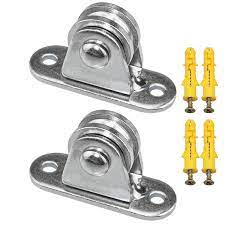
What safety considerations should be kept in mind when using small pulleys?
When using small pulleys, it is essential to prioritize safety to prevent accidents and injuries. Here are some important safety considerations to keep in mind:
1. Proper Guarding:
– Ensure that small pulleys are adequately guarded to prevent accidental contact with moving parts. Install appropriate covers or enclosures to prevent fingers, clothing, or other objects from getting caught in the pulley system. This is particularly important when using hobbyist and craft tools where pulleys are exposed and accessible during operation.
2. Personal Protective Equipment (PPE):
– Wear appropriate personal protective equipment, such as safety glasses or goggles, gloves, and protective clothing, when working with tools that incorporate small pulleys. PPE can protect against potential hazards, including flying debris, loose belts, or accidental contact with rotating components.
3. Training and Knowledge:
– Ensure that individuals operating tools with small pulleys have received proper training and possess the necessary knowledge and skills to use the equipment safely. Familiarize yourself with the manufacturer’s instructions, recommended operating procedures, and any specific safety precautions related to the tool and its pulley system.
4. Inspection and Maintenance:
– Regularly inspect small pulleys, belts, and associated components for signs of wear, damage, or misalignment. Replace any worn or damaged parts promptly to maintain safe operation. Follow the manufacturer’s recommended maintenance schedule and guidelines to ensure the pulley system remains in good working condition.
5. Power Source Safety:
– When working with tools powered by electric motors or other energy sources, observe proper electrical safety precautions. Ensure that the power source is disconnected or turned off before performing any maintenance, adjustments, or repairs on the pulley system. Follow electrical safety guidelines and local regulations.
6. Secure Mounting:
– Ensure that small pulleys are securely mounted and properly aligned to minimize the risk of pulley dislodgment or misalignment during operation. Loose or improperly installed pulleys can lead to accidents or damage to the tool and its associated components.
7. Load Capacity:
– Consider the load capacity of the small pulleys and associated components when using them in applications. Exceeding the recommended load capacity can lead to excessive stress on the pulley system, increasing the risk of failure and potential hazards.
8. Operator Awareness:
– Stay focused and alert while operating tools with small pulleys. Avoid distractions and maintain a clear workspace to minimize the risk of accidents. Be aware of the location of your hands, fingers, and other body parts in relation to the pulleys and moving components.
9. Emergency Stop and Shutdown:
– Ensure that tools incorporating small pulleys are equipped with emergency stop buttons or switches. Familiarize yourself with the location and operation of the emergency stop feature. In case of an emergency or if an unsafe condition arises, promptly activate the emergency stop to halt the tool’s operation.
10. Risk Assessment:
– Conduct a risk assessment of the specific application and identify potential hazards associated with the use of small pulleys. Implement appropriate control measures to mitigate the identified risks and ensure safe operation.
Remember, safety should always be a top priority when working with tools incorporating small pulleys. By following these safety considerations and exercising caution, you can minimize the risk of accidents and create a safer working environment.
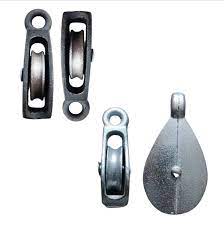
How do small pulleys impact the performance of hobbyist and craft tools?
Small pulleys play a significant role in influencing the performance of hobbyist and craft tools. The proper selection and use of pulleys can affect various aspects of tool performance, including speed, torque, precision, and overall functionality. Here is a detailed explanation of how small pulleys impact the performance of hobbyist and craft tools:
1. Speed Control:
– Small pulleys, when used in conjunction with belts or cables, can be employed to control the speed of rotating components in hobbyist and craft tools. By changing the size ratio between the driving and driven pulleys, different rotational speeds can be achieved. This allows users to adjust the tool’s speed based on the specific task or material being worked on, providing versatility and control.
2. Torque Transmission:
– Pulleys are responsible for transmitting torque from the power source, such as an electric motor, to the tool’s working components. The size and configuration of the pulleys influence the torque output and the force applied to the workpiece. By selecting pulleys with appropriate diameters and groove configurations, hobbyist and craft tools can be optimized to deliver the necessary torque for specific applications, improving efficiency and performance.
3. Power Conversion:
– Small pulleys can be used in systems that convert one type of power or motion into another. For example, hobbyist tools may utilize pulleys in conjunction with gears or other mechanisms to convert rotary motion into linear motion or vice versa. This enables the tool to perform tasks such as cutting, drilling, or sanding with precision and accuracy, enhancing the overall performance and functionality.
4. Belt Tension and Grip:
– Proper belt tension and grip are crucial for the effective operation of hobbyist and craft tools that utilize pulleys. The design and selection of pulleys impact the belt’s engagement and grip on the pulley surface. Well-designed pulleys provide sufficient grip, preventing slippage and ensuring the transmission of power from the driving pulley to the driven pulley. This results in reliable and consistent performance of the tool.
5. Smooth Operation:
– Pulleys, when equipped with appropriate bearings, contribute to the smooth and quiet operation of hobbyist and craft tools. High-quality bearings reduce friction and minimize vibration, resulting in reduced noise levels and improved user experience. Smooth operation enhances precision and control, especially for tasks that require fine detailing or delicate work.
6. System Integration:
– Small pulleys serve as integral components in the overall design and functionality of hobbyist and craft tools. They are often used in conjunction with other mechanisms, such as belts, gears, or linkages, to create a synchronized and efficient system. Proper integration of pulleys ensures smooth coordination and interaction between various components, maximizing the tool’s performance and reliability.
7. Component Sizing and Compactness:
– Small pulleys are particularly beneficial for hobbyist and craft tools where size and compactness are important factors. By utilizing small pulleys, the overall size of the tool can be minimized without compromising performance. This is especially advantageous for handheld or portable tools where weight and maneuverability are critical considerations.
8. Customization and Adaptability:
– Small pulleys offer customization options, allowing hobbyists and crafters to tailor the tool’s performance to their specific needs. By selecting pulleys with different diameters, profiles, or materials, users can optimize the tool for specific applications or materials. This adaptability enhances versatility and expands the range of tasks that can be accomplished using the tool.
Overall, small pulleys have a significant impact on the performance of hobbyist and craft tools. They influence speed control, torque transmission, power conversion, belt tension and grip, smooth operation, system integration, component sizing and compactness, as well as customization and adaptability. By understanding the role of small pulleys and selecting appropriate pulleys for specific applications, hobbyists and crafters can enhance the performance and functionality of their tools, enabling them to achieve desired results with precision and efficiency.
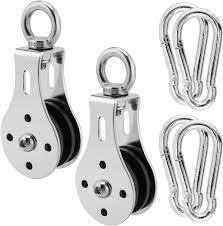
What types of belts or cables are often employed with small pulleys?
When it comes to small pulleys, various types of belts or cables are commonly employed depending on the specific application requirements. The choice of belt or cable is determined by factors such as the desired power transmission, speed ratios, environmental conditions, and load capacity. Here are some types of belts or cables that are often used with small pulleys:
1. V-Belts:
– V-belts are one of the most common types of belts used with small pulleys. They have a trapezoidal cross-section and are designed to fit into V-shaped grooves on the pulleys. V-belts are known for their high flexibility, reliability, and ease of installation. They are suitable for applications that require moderate power transmission and speed ratios.
2. Timing Belts:
– Timing belts, also known as synchronous belts, are toothed belts that engage with toothed pulleys. They provide precise and synchronous power transmission, making them ideal for applications that require accurate positioning or timing. Timing belts are often employed in small pulley systems where precise motion control is crucial, such as robotics, automation, or precision machinery.
3. Flat Belts:
– Flat belts are simple, flat, and flexible belts that make direct contact with the small pulley surface. They are commonly used in applications that require high-speed power transmission or where the pulley diameters are relatively small. Flat belts are suitable for systems with limited space and can be made from materials such as rubber, nylon, or polyurethane.
4. Round Belts:
– Round belts, also known as round o-ring belts, are circular cross-section belts that are often employed with small pulleys. They provide a positive grip by fitting into grooves or pulley recesses. Round belts are flexible, easy to install, and can transmit power in compact systems. They are commonly used in applications such as conveyors, packaging machinery, and small power tools.
5. Cable or Wire Rope:
– In certain applications, small pulleys are used with cables or wire ropes for power transmission or load handling. Cables or wire ropes consist of multiple strands of wire twisted together to form a strong and flexible structure. They are commonly employed in lifting and hoisting systems, cranes, winches, and other applications where heavy loads need to be moved.
6. Poly-V Belts:
– Poly-V belts, also known as multi-rib belts or micro-V belts, have a flat or slightly ribbed surface and engage with corresponding multi-groove pulleys. They offer higher power transmission capabilities compared to standard V-belts due to their increased contact area. Poly-V belts are commonly used in small pulley systems where higher power requirements or multiple belt setups are necessary.
7. Specialty Belts:
– Depending on the specific application, there are various specialty belts available that can be used with small pulleys. These include ribbed belts, serpentine belts, flat-flex belts, and others. Specialty belts are designed for specific purposes such as high-speed applications, unique configurations, or specific environmental conditions.
It’s important to note that the selection of the appropriate belt or cable for small pulleys depends on factors such as load requirements, speed ratios, environmental conditions, and the specific design of the pulley system. Manufacturers and engineers consider these factors to ensure reliable and efficient power transmission in small pulley applications.


editor by CX
2024-05-15
